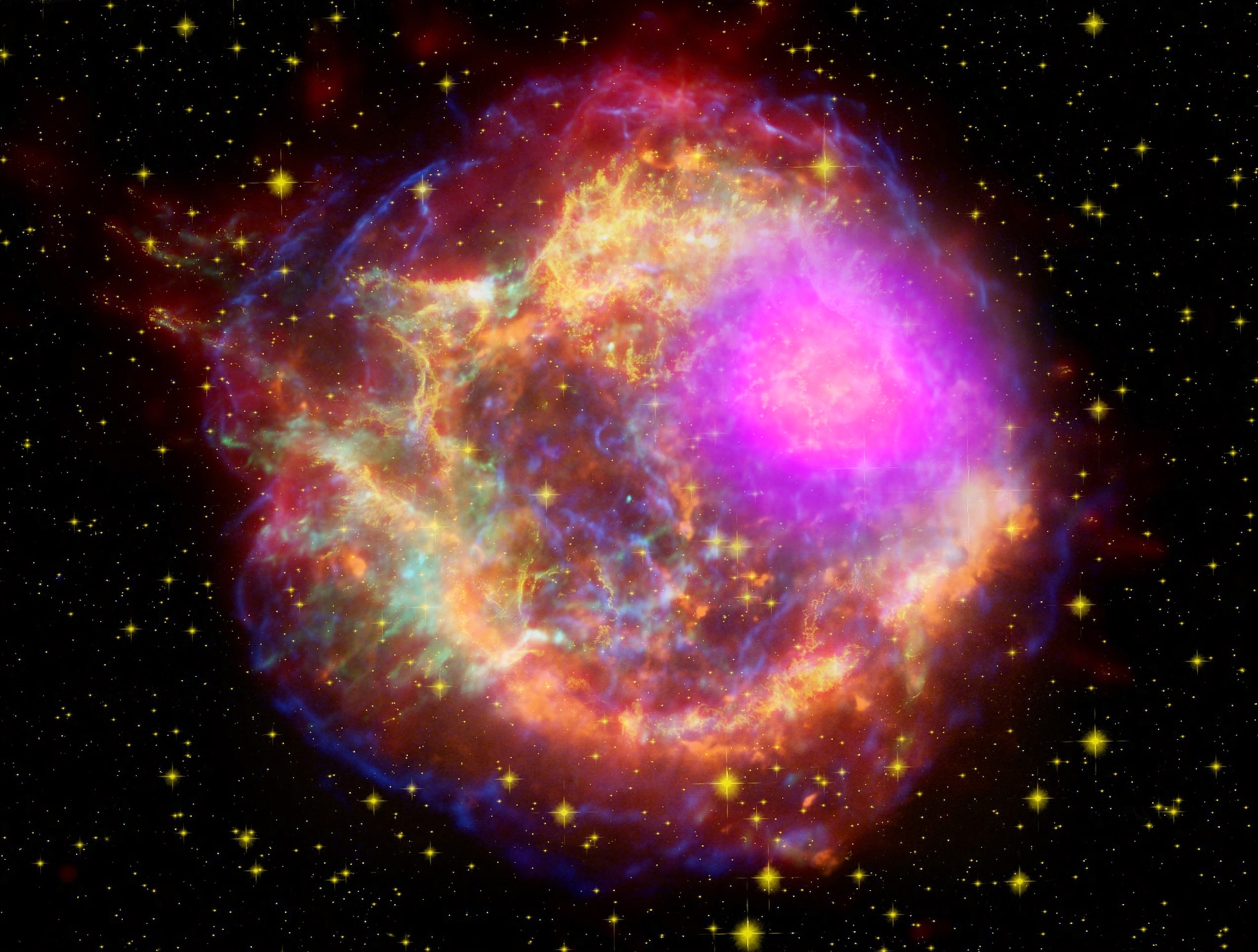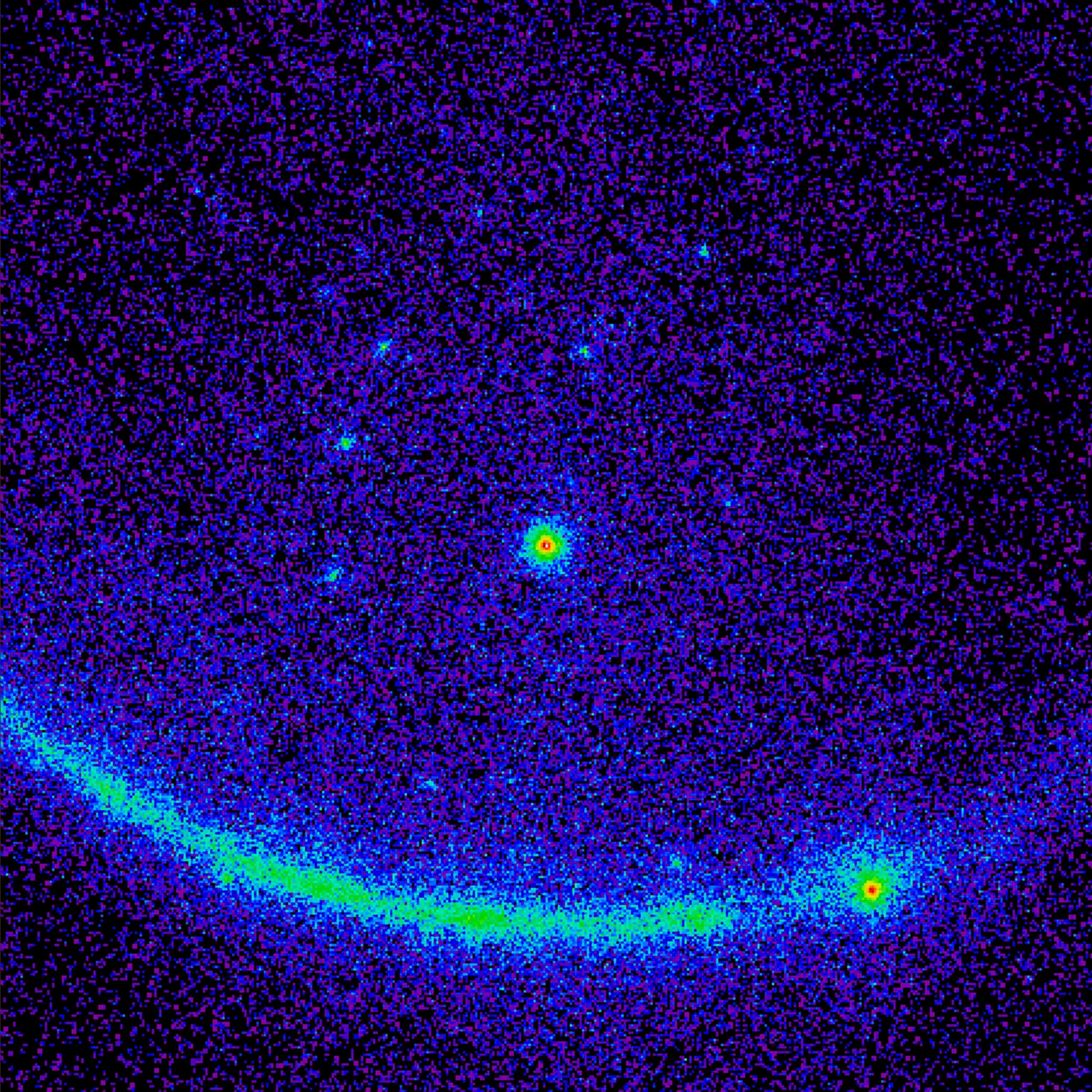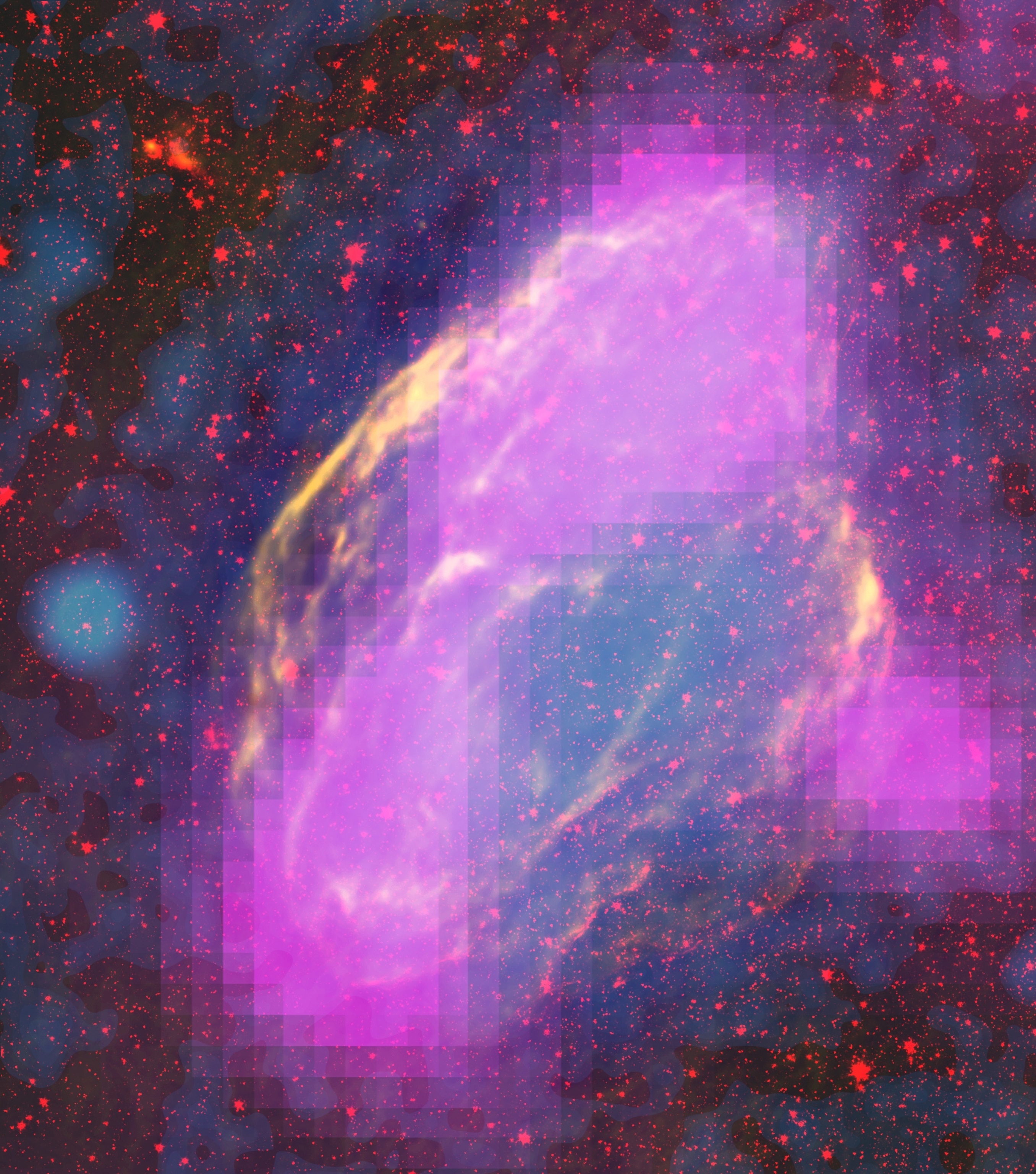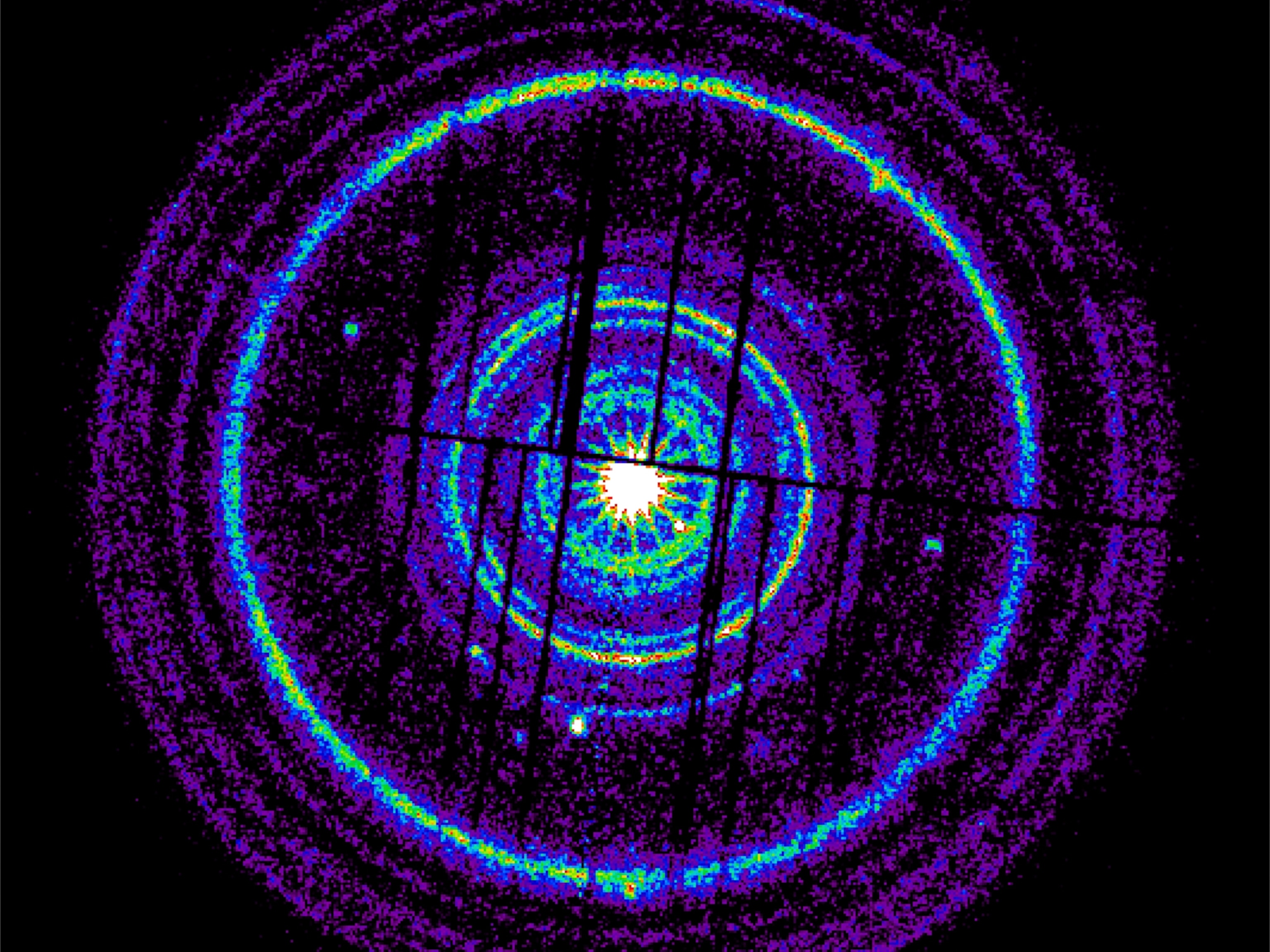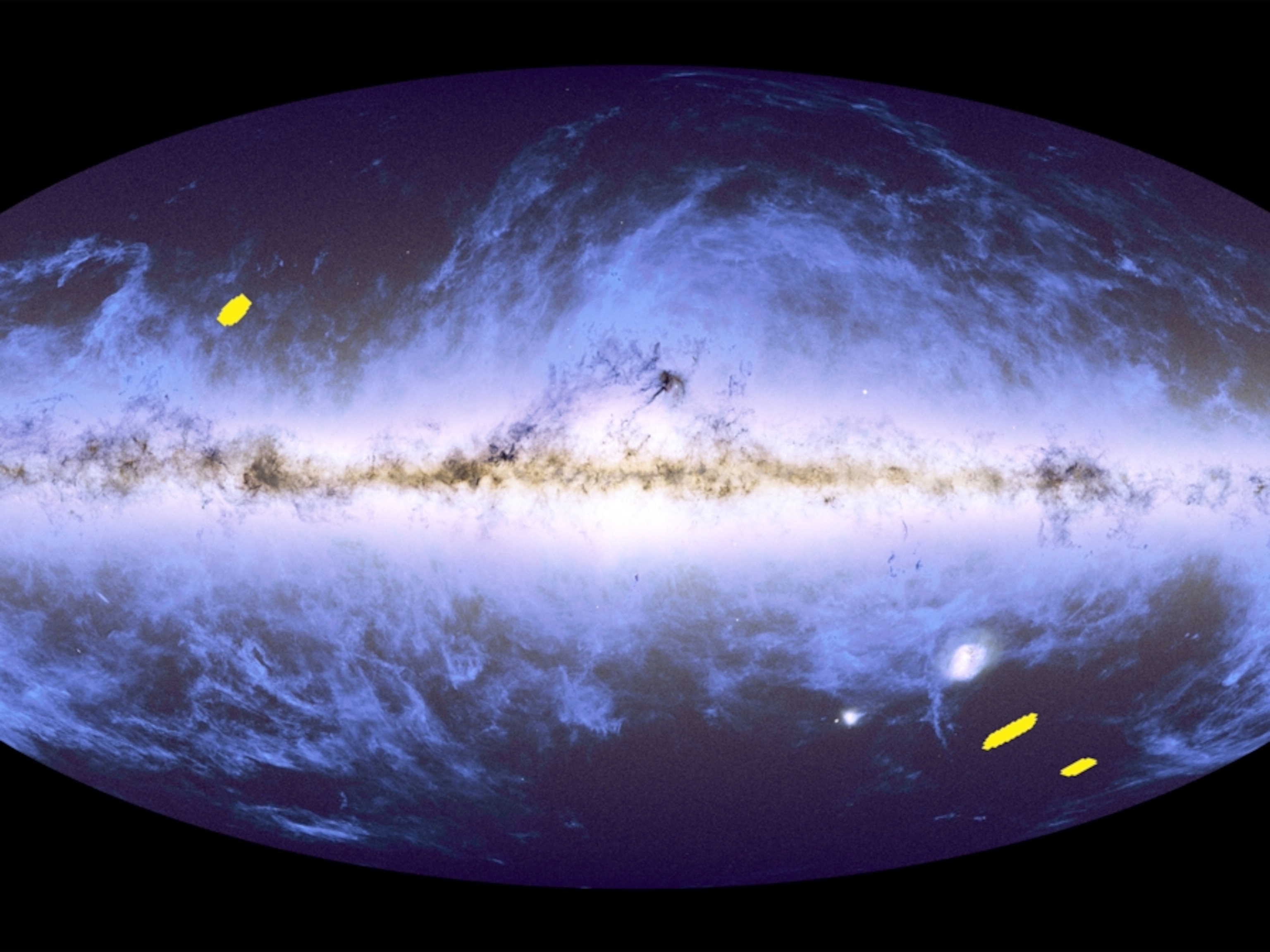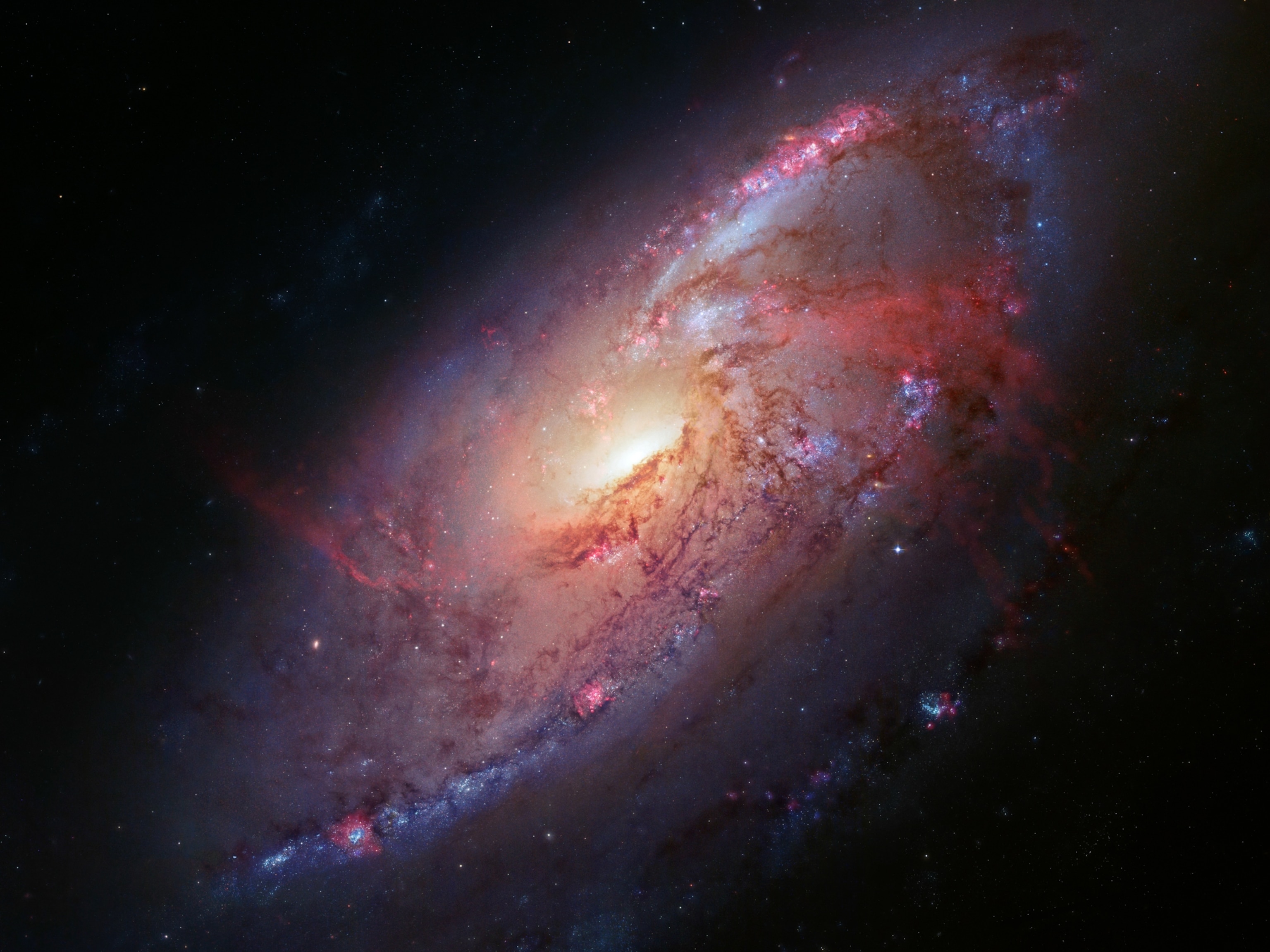Dear Fermi: What it means to see the universe's extremes
High above Earth, a particle detector records the cosmos's most violent phenomena. Here's how—and why.
Dear Fermi,
In the 11 years since a controlled explosion lofted you into space, you have shown me a universe I could never have dreamed: full of exploding and colliding stars, actively feeding black holes, and high-energy particles that whiz through the cosmos. You capture the energy—the excitement—of the universe, because you read the information carried in gamma rays, the highest-energy form of light. Fitting, then, that you are named for the pioneer in high-energy physics Enrico Fermi.
Seventeen years ago this summer, I was working at the University of Chicago, where your namesake spent the final decade of his life and career. I worked on a piece of equipment that detected cosmic rays, the high-energy protons and other nuclei that bombards us from space. In 1912, Victor Hess first detected these particles from a hot-air balloon more than three miles above the ground. But even after decades’ worth of work, no one knew what causes them.
Because the events that create gamma rays also spawned the cosmic rays Hess detected, your eyes led us back to the sites of two former stellar explosions. The discovery was an astronomical triumph, since it let us figure out that exploding stars and the material they heave off can accelerate protons and make cosmic rays.
Such insights are possible because your eyes see a world that is so foreign to us humans. Gamma rays are tens of millions to billions of times more energetic than our rainbow’s familiar colors, and even more powerful than the radiation doctors used last year to image my kneecap and check for cracks. The light you see is so energetic, in fact, that traditional optics don’t—can’t—apply. You don’t use reflective mirrors, like the Hubble Space Telescope, or refracting lenses that bend and focus incoming radiation. Instead, you’re a particle detector orbiting Earth: a tungsten-silicon tiramisu about the size of a storage container.
As gamma rays pass through your tungsten layers, the material coerces some gamma rays to split into pairs of electrons and their antimatter counterparts, positrons. Alternating layers of silicon track those charged daughter particles as they pass through you, and at your base, a third material absorbs these particles and measures their energies. In just seconds, your computer puts all that information together to reconstruct a gamma ray’s energy and direction—which tells us exactly where that light came from. In the process, you reveal phenomena that reach energies few human-made machines can touch.
Fast Facts: Fermi Gamma-Ray Space Telescope
Agency: NASA
Launch Date: June 11, 2008
Launch Vehicle: United Launch Alliance Delta II
Launch Mass: 9,487 pounds (4,303 kg)
Power Source: 3,122-watt pair of solar arrays
Your gaze is not only precise, it’s impressively large. The Large Area Telescope (LAT), your workhorse instrument, looks out at about a fifth of the night sky at a time and pinpoints a gamma-ray source to an area about the size of a grain of sand held at arm’s length. With it, you’ve mapped thousands of objects emitting gamma rays, from the extreme environs around black holes to stars’ explosive demises. Meanwhile, your other instrument, a dozen detectors working in tandem, senses the whole sky (except for where Earth blocks the view) on the hunt for distant flashes called gamma-ray bursts (GRBs). If four or more of the detectors sense one such blast, your onboard computer can swivel you into position to observe the area with the LAT. Less than a minute later, your computer systems can alert astronomers back on Earth to the fireworks.
This ability, dear friend, is what makes you so indispensable. You were made to scour a sky that never rests, to witness stars’ deaths and the massive shockwaves that energize the universe’s particles. Along the way, you’ve found surprises, such as the two enormous gamma-ray bubbles that our Milky Way has been blowing from its center for millions of years. The massive structures stand 25,000 light-years tall and tell the tale of some extreme activity long ago. But their specific cause remains a mystery.
Perhaps your greatest feat to date came several years later, once another type of detector joined modern astronomers’ toolbox: giant facilities that could feel gravitational waves, or ripples in space-time itself.
On that morning in August 2017, you sensed a brief flash of gamma rays and alerted astronomers on Earth. Just a second before, the LIGO and VIRGO detectors had felt gravitational waves’ near-imperceptible tug passing through. After weeks of analysis, astronomers were certain: The two signals came from the same event, a long-ago collision between two ultra-dense stellar leftovers called neutron stars. In finding that GRB, you had connected these gravity signals to light—in effect filming the cosmos’ first talkie.
Odds are good that your filmography will grow. I was worried in March 2018, when news broke that one of your two solar panels had locked up. How relieved I was when I heard engineers had repositioned you to still collect sunlight to power your instruments. As long as you continue collecting sunlight and your positioning gyroscopes remain healthy, you will reveal the gamma-ray sky for years to come.
You have shown us so much about our constantly changing, sensational, enthralling cosmos. You have changed the way I see the universe. For that, I thank you.
Always,
Liz
